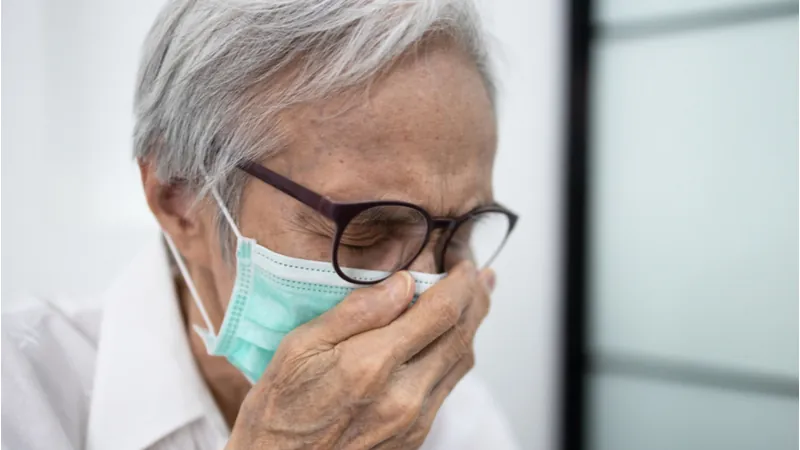Researchers have used a big data approach to disentangle cellular and physiological changes that are specific to COVID-19 from those caused by aging [1]. Identifying these improves our understanding of the disease and may help explain why COVID-19 has a more severe effect on older people.
A tangled skein
The enormous impact of COVID-19 around the world has led to a massive research effort to characterize the disease, including how our immune system responds to the challenge it poses. Many studies have investigated the differences in the immune cell population of COVID-19 patients and healthy individuals, but they did not distinguish between changes caused by COVID-19 and age-related changes.
There is good reason to expect significant age-related immune changes to color these analyses. COVID-19 has disproportionately affected older people. People over 65 have the highest fatality rate and make up nearly 80% of COVID-19 deaths in the U.S., and COVID-19 infections are significantly more likely to become severe in older people. The disproportionate representation of the elderly among COVID-19 patients means that analyses of the changes in patients might capture not only its effect on the immune system but also age-related immune changes.
Separating threads
To distinguish age-related changes from COVID-19-driven changes, an international team of researchers analyzed data from healthy individuals and people with respiratory diseases, including COVID-19. The data included clinical blood tests, immune cell populations, and plasma proteomic profiles. The inclusion of patients with other respiratory conditions enabled the team to identify changes specific to COVID-19 (rather than pulmonary distress more generally), and comparing people of different age groups with and without COVID-19 distinguished between the COVID-driven changes and changes caused by aging.
The team found an increase in the proportion of B cells in patients with COVID-19 and other respiratory illnesses. Changes in certain T cell populations were specific to COVID-19 patients, and a unique population of T cells was seen in patients with moderate COVID-19. A proteomics analysis showed that the pathways that were the most upregulated in COVID-19 patients – matrisome proteins and extracellular matrix proteins – were, in fact, strongly upregulated with age. Without this analysis, the changes in these pathways would be considered a consequence of the disease, clouding our understanding of its effects.
Further analysis identified pathways that are specifically upregulated in COVID-19 patients independently of age. These include interferon response, interleukins, complement, and lysosome proteins. These pathways merit further investigation for potential biomarkers or perhaps even interventions aimed at COVID-19.
We examine the cellular and soluble determinants of coronavirus disease 2019 (COVID-19) relative to aging by performing mass cytometry in parallel with clinical blood testing and plasma proteomic profiling of ~4,700 proteins from 71 individuals with pulmonary disease and 148 healthy donors (25–80 years old). Distinct cell populations were associated with age (GZMK+CD8+ T cells and CD25low CD4+ T cells) and with COVID-19 (TBET-EOMES- CD4+ T cells, HLA-DR+CD38+ CD8+ T cells and CD27+CD38+ B cells). A unique population of TBET+EOMES+ CD4+ T cells was associated with individuals with COVID-19 who experienced moderate, rather than severe or lethal, disease. Disease severity correlated with blood creatinine and urea nitrogen levels. Proteomics revealed a major impact of age on the disease-associated plasma signatures and highlighted the divergent contribution of hepatocyte and muscle secretomes to COVID-19 plasma proteins. Aging plasma was enriched in matrisome proteins and heart/aorta smooth muscle cell-specific proteins. These findings reveal age-specific and disease-specific changes associated with COVID-19, and potential soluble mediators of the physiological impact of COVID-19.
Conclusion
This study isn’t about longevity in any way, but it demonstrates the importance of geroscience in general. Age is not only a risk factor for many conditions but also a confounding factor of many diseases. This is strikingly clear in the case of COVID-19, making it critical to separate how age and COVID-19 affect individuals and to understand how their interaction increases risk.
Literature
[1] Arthur, L., et al. Cellular and plasma proteomic determinants of COVID-19 and non-COVID-19 pulmonary diseases relative to healthy aging. Nature Aging (2021), doi: 10.1038/s43587-021-00067-x




